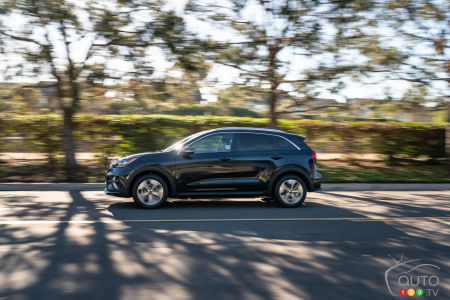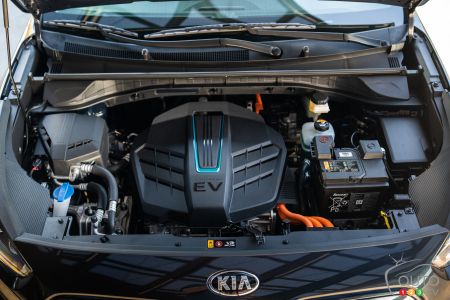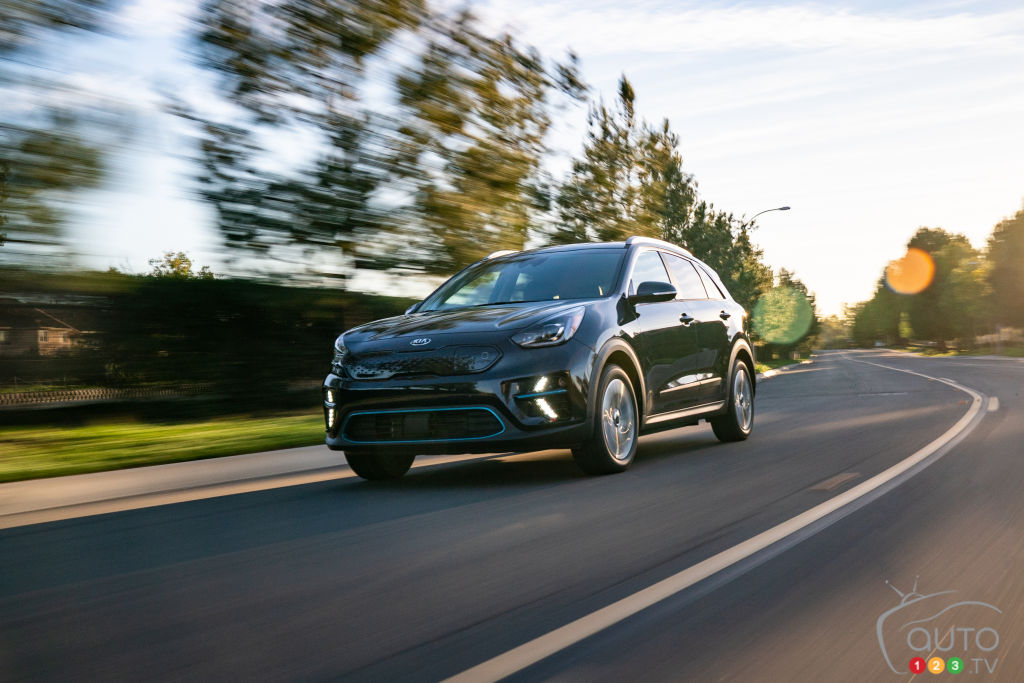Auto123 tests the Kia Niro EV in the long run. Today is the sixth part.
See also: Kia Niro EV long-term test Part 1: Builder, columnist and hobbyist (young)
See also: Kia Niro EV long-term test, Part 2: Electricity, it’s not new
See also: Kia Niro EV Long Range Test Part 3: Let’s take a closer look at this Niro
See also: Kia Niro EV Long-Term Test Part 4: Take Charge of Charging
See also: Kia Niro EV long-range test Part 5: Mileage and questions
In my last column (Chapter 5), I’m starting to tell you about my first long ride behind the wheel of a Kia Niro EV, my first in a 100% electric car. I had a little baggage but many worries.
Finally, throughout this round trip of about 1,000 kilometres, the questions that were raised above all else. I promised to get back to you with the answers. Not only did I find it thanks to the interviewers whose EV has no more (or almost) secrets, but I also had the help of well-informed readers.
I would especially like to thank Jan Joslin, a Montmagny agronomist who is very interested in switching to electric, even for farm tractors, whose obvious explanations stem from the daily use of his Tesla Model 3.
In fact, anyone wishing to further my studies in EV can always do so by writing to me at [email protected].
Shopicar.com, 100% online, shop for your car, buy online and have it delivered to you in Quebec!
Having said that, let’s revisit the questions left unanswered together…

Kia NBiro EV, remaining charge indicator
A question : Is it normal for an electric vehicle to show a greater range than expected by the manufacturer?
Concept : Since I plug the Niro into a 120v outlet in my garage, I regularly get a charge beyond the maximum range of 385 km predicted by my Kia.
to reply : The electric vehicle’s computer estimates the available kilometers based on a number of data from previous trips. It takes into account, for example, the distances traveled, the percentage of the load used for each of these displacements and even the way the pilot drives, i.e. not in a hurry or foot on the ground.
I want to check with Kia how far in the history of the car its algorithms have been (the last two rides or the last two weeks?). Mr. Jocelyn told me that Tesla uses data provided collectively by owners. Thus, for such a course programmed in navigation, the computer announces the required average autonomy based on the past performance of the “club”.
Essentially, if you’re a driver who keeps an eye on your environmental footprint and stress, the EV “rewards” you by giving you more theoretical range than the manufacturer expected, assuming more aggressive driving.
The Kia Niro EV also encourages zen driving by offering its driver a choice of three driving modes: Eco, Comfort and Sport. Your choice will primarily determine the force of the acceleration. In Economy mode, which I prefer to enjoy maximum autonomy of course, I feel resistance under the right pedal, which fades into Sport mode.
By the way, I thought that by activating the cruise control, even the one called smart, I would retain more autonomy. False. Precisely, I will facilitate computer calculations thanks to a stable cruising speed, but as soon as the car attacks a slope, it makes an effort to maintain the programmed speed which is detrimental to saving kilometres.

A question : One kilometer of motorway does not always correspond to one kilometer of autonomy consumed. why ?
to reply : The same computer keeps the ability to constantly recalculate your range according to many other factors of the trip taken: uneven terrain, wind strength and direction, outside temperature, radio usage or not, air conditioning, etc. All this data is constantly spoiling the energy you really need to extract from your battery to cover a small kilometer.
A question : The lower my independence, the greater the gap between theory and reality. why ?
Context : I am paying attention to the signs on the 401 line that tell me how far I am from Kingston (Ontario). A calculation after crossing two of these boards told me that I subtracted 55 km from my route. A quick look at the dashboard tells me I spent 63 kilometers to cover those 55 kilometers. difference of 8 km. But the third mark reveals to me this time a difference of 22 km…
to reply : For question 2, the computer ingests the new data as the flight progresses, then changes its mind… If a snowstorm has risen within the past 10 minutes or bad hills continue to rise or succeed in squashing mushrooms or all of those actions at the same time, spending Energy will be greater. On the other hand, the opposite can also happen: the weather becomes milder, the wind is dropping, and you are rolling down the slopes and barely touching the accelerator. Therefore, your independence will not decrease so quickly.
Can you even hope to add miles through the regeneration effect, when you brake or slide down a hill without touching the throttle? Yes, but nothing to write to your mother. According to Liann Joslin, manufacturers have turned this kinetic phenomenon into a great marketing tool, but the truth is not exceptional. “The amount of energy restored is not great, unless you spend your time going down the coast of Charlevoix, and more. Yes, you can come back from a convenience store trip two kilometers more than when you left but only a short trip with stops.”

Kia Niro EV, under the hood
Well, I’m writing, I’m writing, and my word limit has already run out. in the next time. But before I leave you with a related question from reader Mark Hyun: “Why is there no alternator in the EV? While driving, it recharges the batteries, like in a combustion car.”
Here again, enthusiast Jan Joslin comes to my rescue: “The technology is not yet developed. In theory, it might work, but in practice, in the current scientific case, the generator would lose a lot of energy in the form of heat, not to mention the extra weight that might He puts it on the EV.”

“Certified gamer. Problem solver. Internet enthusiast. Twitter scholar. Infuriatingly humble alcohol geek. Tv guru.”





